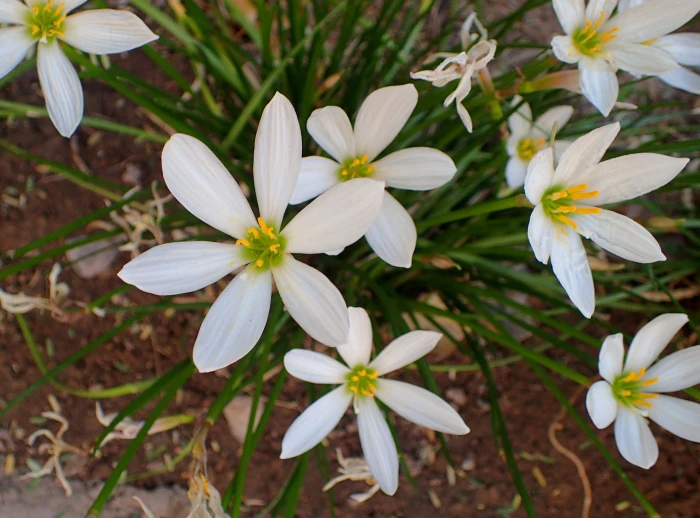Autumn Zephyrlily
(Zephyranthes candida)
Autumn Zephyrlily (Zephyranthes candida)
/
/

Krzysztof Ziarnek, Kenraiz
CC BY-SA 4.0










































































Estimated Native Range
Climate Requirements for Pharr, Texas
| This Plant | Your Site | Plant Suitability for Your Location | ||
|---|---|---|---|---|
| • Precipitation | 1" - 172" | 23" | Your precipitation may be insufficient for this plant. Irrigate N" / year. | Irrigate N" / year |
| • High Temp. | 65°F - 109°F | 96°F | Your summer temperatures are normal for this plant. | Excellent |
| • Low Temp. | 10°F - 78°F | 48°F | Your winter temperatures are normal for this plant | Excellent |
Summary
The Autumn Zephyrlily is valued for its ease of care and the bright, clean look of its flowers. It is often used in borders, rock gardens, and as a ground cover. It is also suitable for container planting, allowing for overwintering in colder climates. While it prefers full sun to part shade, it requires consistently moist soil, especially during the growing season. It is not typically prone to serious pest or disease problems, but can be affected by bulb rot if overwatered or if drainage is poor. It is hardy in USDA zones 7-10, and in colder zones, it can be lifted and stored over winter.CC BY-SA 4.0
Plant Description
- Plant Type: Herb
- Height: 0.5-1 feet
- Width: 0.5-1 feet
- Growth Rate: Slow
- Flower Color: White
- Flowering Season: Summer, Fall
- Leaf Retention: Evergreen
Growth Requirements
- Sun: Full Sun, Part Shade
- Water: Medium
- Drainage: Medium
Common Uses
Bank Stabilization, Bee Garden, Border Plant, Butterfly Garden, Deer Resistant, Drought Tolerant, Groundcover, Low Maintenance, Potted Plant, Rock Garden, Salt Tolerant, Showy Flowers, Street Planting
Natural Habitat
native to the grasslands and marshy areas of Southern Brazil, Paraguay, Argentina and Uruguay, where it thrives in moist, open spaces
Other Names
Common Names: Zephyr-Lily, Fairy-Lily, White Windflower, White Rain Lily, Peruvian Swamp Lily, Flower-Of-The-Western-Wind, White Rain-Lily, Weiße Windblume, Azucenita, Vit Sefyrlilja
Scientific Names: Zephyranthes candida, Amaryllis candida, Atamosco candida, Zephyranthes nivea, Amaryllis nivea, Argyropsis candida, Hippeastrum zephyranthum, Plectronema candida
GBIF Accepted Name: Zephyranthes candida (Lindl.) Herb.